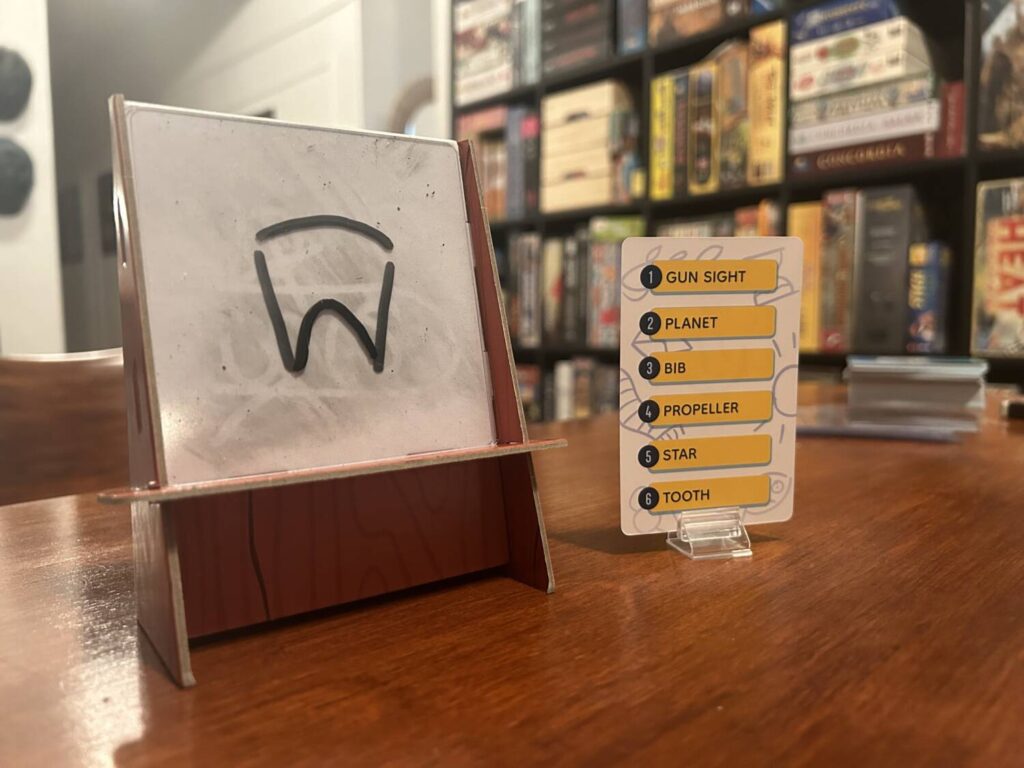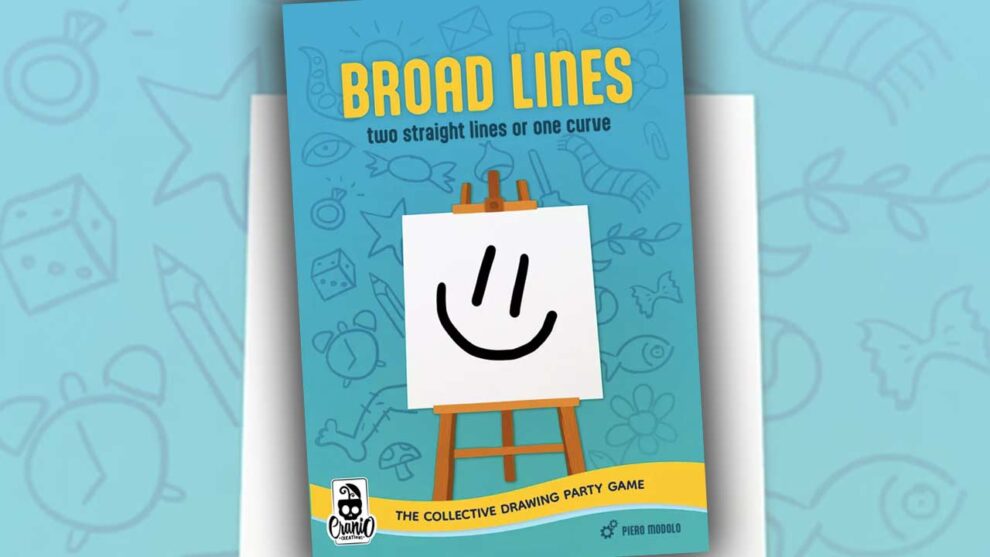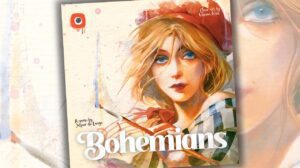Disclosure: Meeple Mountain received a free copy of this product in exchange for an honest, unbiased review. This review is not intended to be an endorsement.
I don’t enjoy failure, but I’ve come to believe that the best party games are the ones that constantly force you to fail. Just One is hard. Codenames can be crushingly difficult. In That’s Not a Hat!, failure is inevitable. Wavelength, Pan T’es Mort, Concept, I could go on. The specter of disaster looms. It often pummels you. Why do we play these, exactly?
I Know You Want It
Add to this fine tradition Broad Lines, a new cooperative party game from designer Piero Modolo and publisher Cranio Creations. Broad Lines seems to draw obvious inspiration from Just One, but instead of a word game, it applies the same general structure to Pictionary.
The active player, whomever that may be, draws a card and picks a number, which corresponds to a word. The goal of the group, it may not surprise you, is to get the active player to guess this word. The first player takes a square transparency and a dry erase marker, and draws one of two things: either a single curved line, or two straight lines. Once they’re done, the transparency gets placed on the provided easel, and the active player gets two guesses.
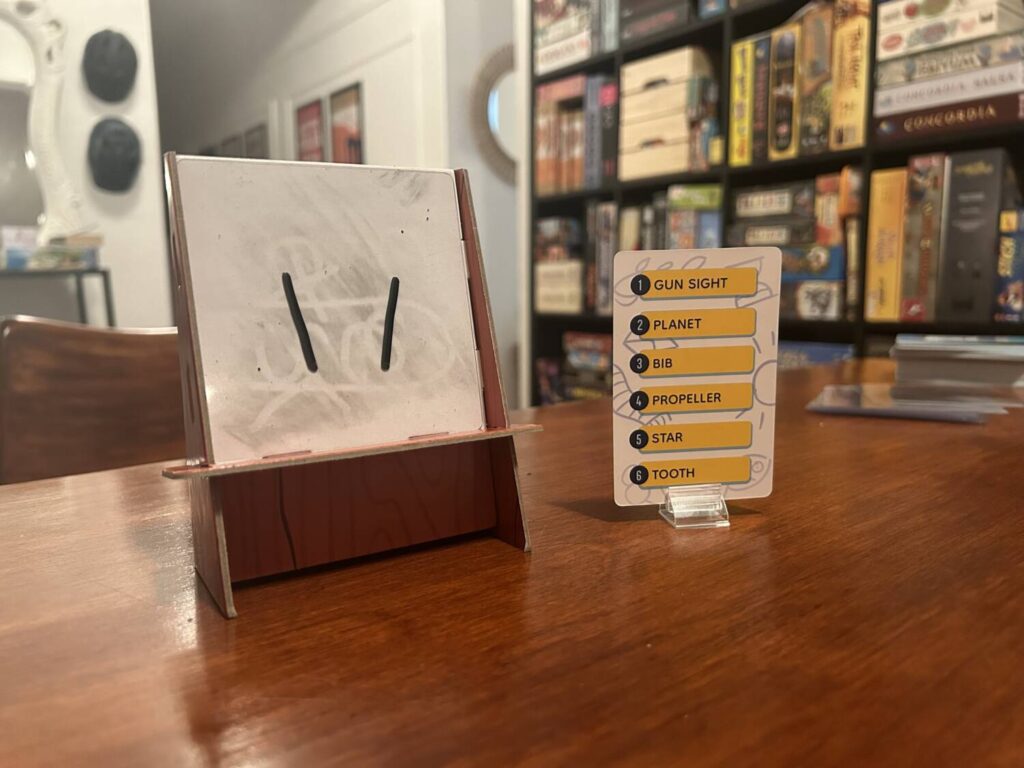
Assuming they’re wrong, play continues in kind around the table. The next player takes another transparency, draws either a curved line or two straight lines, and then places this second transparency onto the easel, overlapping the first. That’s where the magic happens, in this communal fashioning of a single drawing.
Eventually, either the guesser gives up, or gets it right. In either case, the next player draws a card and the process begins anew. Play goes until you have run out of transparencies. Think of them as your life points. The goal is to identify as many drawings as possible.
As one of the artists, you will misjudge, you will misalign, and you will occasionally have a different idea from everyone else. As the active player? God be with you.
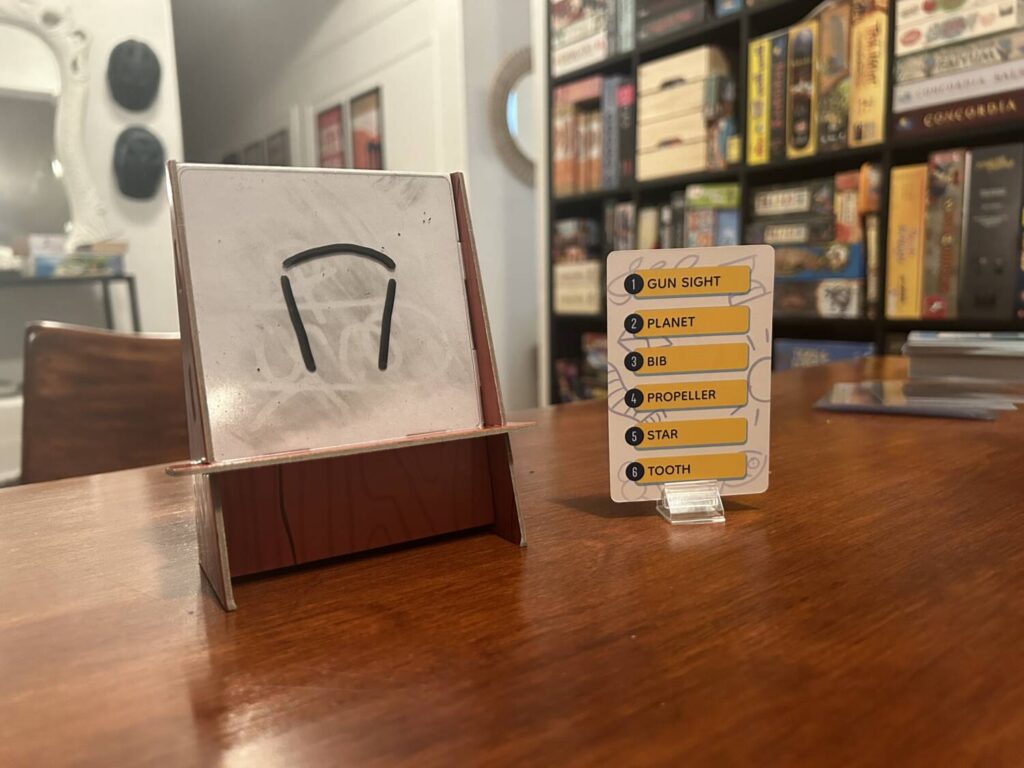
Transparency in Governance
Scoring is based on the number of drawings you collectively identify before running out of transparencies. You probably won’t get many. Most drawings, at least until all the players settle into the best approach, average five or six transparencies, assuming they don’t devolve into absolute chaos before then.
As the active player, you do have the option to pass instead of guessing, surrendering to the drawing, but in my experience it doesn’t happen much. You have to pass in lieu of guessing, and it’s pretty easy for an errant guess to trip across your lips before you’ve even thought about passing. That’s alright, though. Broad Lines isn’t about winning, and I wouldn’t want to play it with anyone for whom it was.
It doesn’t quite manage to elevate itself above Good, but there are moments when you are invited to fully embrace what the game is doing and it becomes a joy. For the artists, Broad Lines is about those moments when a player adds their transparency, only to realize they got it entirely wrong, or that they judged it perfectly. For the guesser, this game is about the uncomfortable feeling that everyone else knows exactly what you’re looking at, but you can’t see it.
Broad Lines is about finding joy in your failure.
